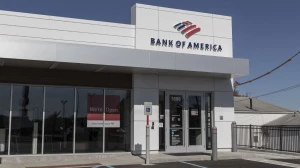
How to Transfer Money From One Bank to Another Instantly?
Transfer money instantly between banks, by accessing your online banking, selecting Transfer, inputting the recipient's account details, choosing an instant transfer option, verifying, and sending the funds for an immediate bank-to-bank transfer.
by Kowsalya
Published Aug 01, 2023 | Updated Dec 11, 2023 | 📖 6 min read
How to Transfer Money From One Bank to Another Instantly?
In today's digital age, transferring money between banks has become a seamless process, allowing users to manage their finances efficiently. Whether you're moving funds between your accounts or sending money to someone at a different financial institution, here's a step-by-step guide on how to transfer money from one bank to another instantly:
Log into Your Bank's Website or App
Access your bank's online portal or mobile app using your credentials.
Navigate to the Transfer Feature
Look for the "Transfer" or "Send Money" option within the banking platform.
Select "Transfer to Another Bank"
Choose the option that allows you to transfer funds to an account at a different bank.
Enter Recipient's Bank Information
Provide the routing and account numbers for the recipient's bank account. Ensure accuracy to avoid errors.
Initiate the Transfer
Complete the transfer process as guided by your bank. Some institutions may require additional verification to ensure security.
Consider Transfer Limits and Fees
Be aware of any transfer limits imposed by your bank. Additionally, check for any associated fees, especially when dealing with large amounts.
Explore Instant Transfer Platforms
Some U.S. banks offer platforms like Zelle, enabling free and instant money transfers between accounts. This method usually requires only the recipient's mobile number or email address.
Wire Transfers for Larger Amounts
For significant transactions, consider using a wire transfer through your bank. Provide the recipient's account and routing numbers, but be prepared for potential fees.
Explore Alternative Methods
Utilize third-party services like PayPal, Zelle, Venmo, Apple Pay, or Cash App for quick and cost-free transfers.
Be Mindful of Regulation D
If transferring from a savings account, be aware of Regulation D, which may impose limitations on the number of monthly withdrawals. Check your bank's rules to avoid fees.
Double-Check Information
Before finalizing the transfer, double-check all account numbers, phone numbers, and email addresses to prevent errors. Copy and paste details whenever possible for accuracy.
Contact Support in Case of Errors
If a mistake occurs, promptly contact the transfer service or your bank for assistance. Some platforms may have mechanisms in place to rectify errors.
Discover a wealth of financial knowledge and services on MarketsHost, your one-stop destination for all Banking needs, whether you're interested in Credit Cards, Mortgages, or Loans.
How Much Money Can I Transfer Between Banks?
The amount of money you can transfer between banks varies depending on factors such as the specific banks involved, your account type, transfer type (domestic or international), and regulatory compliance. These limits are set by individual banks and can range widely, from a few thousand dollars to much higher amounts for premium or business accounts.
To determine your precise transfer limit, it's advisable to contact your bank's customer service or consult their official website for the most up-to-date information tailored to your situation.
|
Financial Institution |
Transfer Type |
Transfer Limit |
|
Bank of America Corp. |
ACH Same Day Transfer |
Up to $1,000,000 |
|
Standard Transfer |
$3,500 per day or $10,000 per week |
|
|
JPMorgan Chase & Co. |
Standard Transfer |
Up to $25,000 per day |
|
Citigroup Inc. |
Standard ACH Transfer |
Up to $10,000 per day |
|
Capital One Financial Corp. |
Standard Transfer |
Up to $10,000 per day or $25,000 per month |
Also Read >> How to Save Money
What Are Alternative Ways to Transfer Money?
Alternative ways to transfer money include using wire transfers for larger amounts, requiring the recipient's account and routing numbers, with transactions typically taking less than 24 hours.
However, both parties may incur fees. For smaller transactions, options like writing a paper check, or using third-party services such as PayPal, Zelle, Venmo, Apple Pay, or Square's Cash App are available, often at no cost. These methods provide convenience for transferring funds between bank accounts quickly. It's essential to consider factors such as speed, cost, and transfer limits when choosing the right method for your specific needs.
Related >> How to Make Money Fast
How is a Bank-to-Bank Transfer Different From Other Transfers?
A bank-to-bank transfer, also known as an external transfer, distinguishes itself from internal transfers by allowing the electronic movement of funds from one bank account to another at different financial institutions.
This method enables users to send money electronically, bridging accounts across various banks. In contrast, internal transfers involve shifting funds between accounts held at the same bank.
Bank-to-bank transfers often permit the establishment of recurring transactions, although certain banks may impose limits on transfers per transaction, day, or month. Additionally, individuals can explore alternative methods such as peer-to-peer payment apps, wire transfers, or paper checks, considering factors like speed, cost, and transfer limits to determine the most suitable option for their specific needs.
Which is the Cheapest Way to Send Money Internationally?
Bank drafts or cashier's cheques are often considered one of the cheapest ways to send money internationally, primarily due to their low processing fees and straightforward process. Here are the key reasons why this method is cost-effective:
Low Processing Fees
Banks typically charge minimal fees for issuing bank drafts or cashier's cheques. These fees are usually lower than the fees associated with online money transfer services or wire transfers.
Fixed Exchange Rates
When you purchase a bank draft or cashier's cheque, you can often lock in a fixed exchange rate. This can be advantageous because it allows you to know exactly how much the recipient will receive, regardless of fluctuations in exchange rates. Other methods, such as online transfers, may have less favorable exchange rates that can result in higher costs.
No Intermediary Banks
Unlike online money transfers that may involve intermediary banks, bank drafts and cashier's cheques typically have fewer intermediaries involved in the process. Fewer intermediaries mean fewer fees and charges.
Safety and Tracking
Bank drafts and cashier's cheques are relatively safe because they can be tracked. If the draft or cheque doesn't reach the intended destination, you can follow up with the bank to resolve the issue.
What is a Bank Transfer?
A bank transfer is a secure and convenient payment method that allows both consumers and business owners to move money between bank accounts. For business owners, this often involves transferring funds from sales or transactions related to their business to a designated business bank account. In the context of Square, users can benefit from various types of transfers, including standard next-business-day transfers, instant transfers with a fee, and same-day transfers.
These transfers play a crucial role in efficiently managing cash flow, paying bills, and handling various financial aspects of a business. Bank transfers provide a digital record of transactions, offer flexibility in scheduling, and contribute to building credit, making them a preferred choice for moving funds electronically.
How to Transfer Money From One Bank to Another Instantly - FAQs
1. How can I transfer money instantly between different banks?
You can transfer money instantly by using your online banking account or mobile app and selecting the "Instant" or "Real-Time" transfer option if available.
2. What information do I need for a bank-to-bank transfer?
You'll need the recipient's routing number, account number, and the correct transfer amount for a successful bank-to-bank transfer.
3. How long does a bank transfer usually take?
It varies, but internal transfers within the same bank are often instant, while external transfers between different banks can take up to two business days.
4. What is the cheapest way to send money internationally?
Bank drafts or cashier's cheques are often the cheapest due to low processing fees and fixed exchange rates, reducing costs.
5. Are there transfer limits when moving money between banks?
Yes, transfer limits vary between banks and accounts, so it's advisable to check with your bank for your specific limit.




